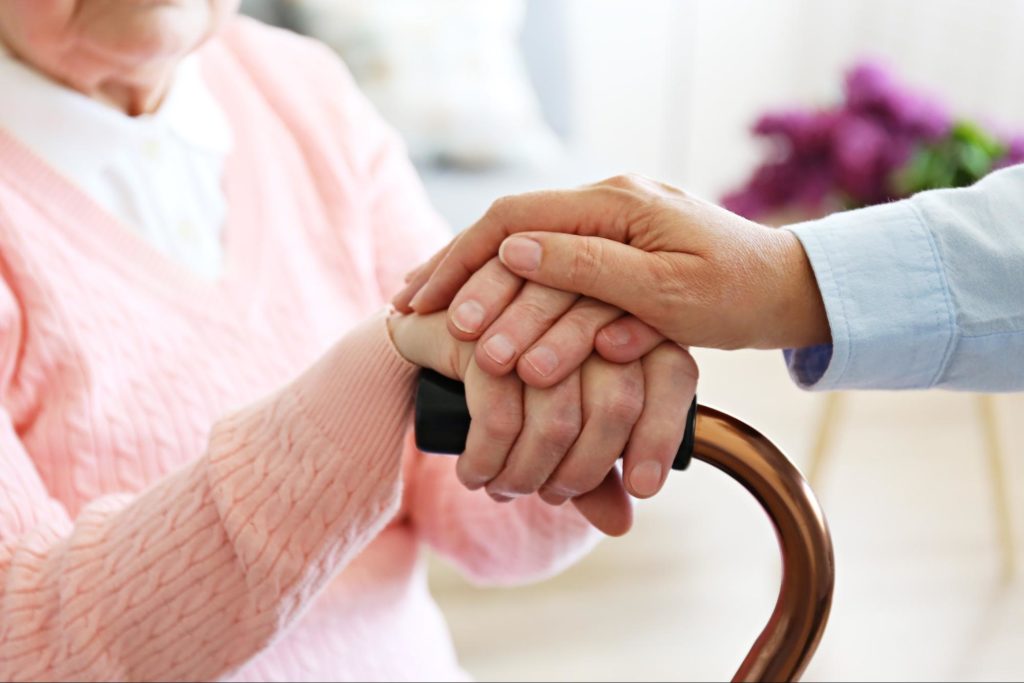
As parents age, the need for a safe and welcoming living environment arises. Common home layouts, including stairs, uneven flooring and narrow hallways, can make getting around difficult and increase the possibility of falls.
The solution? An accessible mother-in-law suite.
Learn how to create a handicap-accessible mother-in-law suite that allows your loved one to reside comfortably in a location built for their needs.
Creating a Handicap-Accessible Mother-in-Law Suite
Developing a suitable living space for your parent can feel like a big undertaking. But with preparation and mobility-enhancing solutions, you’ll be well on your way to creating the ideal living space.
What To Consider
Before you can determine how to create a handicap-accessible space for your parent, you need to consider a few factors regarding your home, loved one and budget. Read on as we discuss elements to consider at the start of the process.
1. Available Space
First, survey the space you are planning to use. Understanding how much space you have to work with will clarify what options are within reach.
For example, if you are constructing a mother-in-law suite as part of an addition or new custom home, then you’ll have the freedom to work with a builder and develop a specific layout to accommodate your loved one. This could include plans to install a home elevator before the foundation of the building is poured.
If the living space is already constructed, making it handicap accessible is still possible. If there are stairs, for instance, adding a stair lift is one solution. A wide range of staircases can accommodate comfortable stair lifts that make moving between floors simple.
2. Physical Limitations
The needs of your loved one must also be considered. Assessing their mobility level and their needs will help you determine how to design the space.
For example, if your parent uses a wheelchair, having wide navigable hallways or an open floor plan is essential. If, on the other hand, your parent can get around without a wheelchair but has trouble going up and down the stairs, then adding a stair lift may be the best course of action.
It’s also important to consider the day-to-day activities your parent will be involved in. Do they enjoy going outside often? Is there easy access to the backyard or patio? Think through these questions and more to create the best living space possible.
3. Budget
Creating a handicap-accessible space requires careful planning and assistance from a skilled team of professionals. While these in-home modifications and additions will come at a cost, consider the many benefits offered.
First, the cost of housing a loved one at home is often less than the cost of a long-term eldercare facility. Additionally, the ability to have a parent close by allows families to spend more time together. Plus, the home improvements made to accommodate a parent often enhance the value of the home.
Saving on long-term care costs by creating a safe living environment for your parent is a win-win situation. If a stair lift or home elevator is a part of your accessibility plan, be sure to add them to your budget! Consider the cost of a stair lift vs. the cost of a home elevator, as well as the other modifications that you’ll want to make when adding a mother-in-law suite. Once you know your budget, you can compare this to costs associated with other options you may be considering.
Solutions for Increasing Accessibility
Now it’s time to explore the accessibility-enhancing options available. Read on for ideas on how to create the ideal mother-in-law suite.
1. Stair Lift
In many cases, the mother-in-law unit is not located on the main level of the home. This makes helping your parent navigate the stairs a priority. To increase accessibility, adding a stair lift is a great option.
A stair lift does not require construction to be installed as it attaches to the stair treads. In addition to an indoor stair lift, stair lifts can be installed outdoors. A stair lift is a dependable option; however, there are more ways to make the unit handicap accessible.
2. Home Elevator
Bring the ultimate convenience to your loved one with an in-home elevator. For individuals who use wheelchairs, a home elevator removes the burden of stairs completely.
The ability to travel between floors is just one of the benefits that make home elevators a reliable mobility solution for seniors. On top of the convenience they offer, home elevators add value to your home.
3. Residential Wheelchair Lift
Another option for enhanced accessibility is a residential wheelchair lift, also known as a vertical platform lift. Residential wheelchair lifts are ideal for short staircases or elevated platforms that are difficult to navigate. Oftentimes, these lifts are placed outdoors to add accessibility to a porch or deck, or in a garage.
Making areas in and around your home more handicap accessible is possible. These lifts have enclosed and open options and allow the user to remain in a wheelchair while traveling up to 14 feet vertically. Just like stair lifts, residential wheelchair lifts can be installed outdoors and indoors.
Create the Accessible Space Your Parent Needs with Arrow Lift!
Creating a handicap-accessible mother-in-law suite is easier with help from the experts at Arrow Lift. For over 35 years, we’ve installed stair lifts, elevators, vertical platform lifts and more in a wide range of homes and mother-in-law suites. With ample experience and dedicated customer service, we’re here to provide you top-tier products that your loved one can rely on.
Contact Arrow Lift today to schedule an appointment with our team!

 Since 1985, Arrow Lift has been in the business of helping our customers overcome barriers. From
Since 1985, Arrow Lift has been in the business of helping our customers overcome barriers. From 